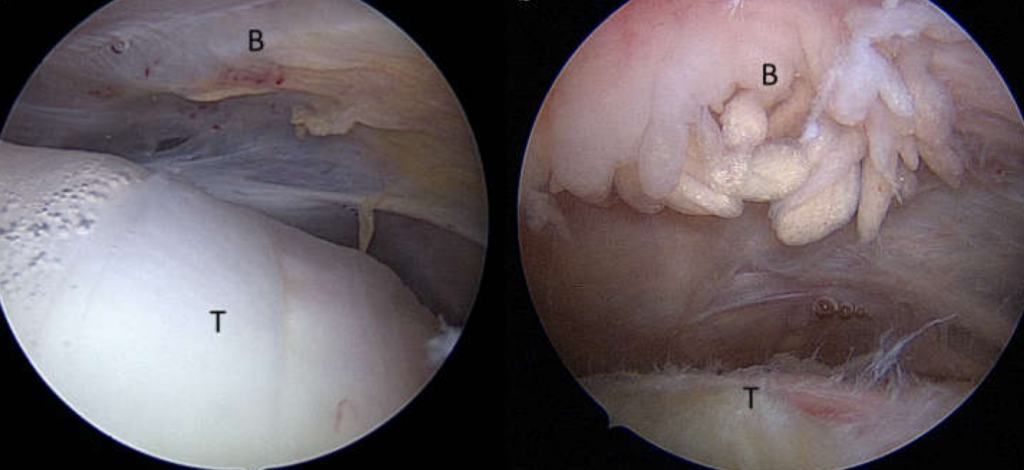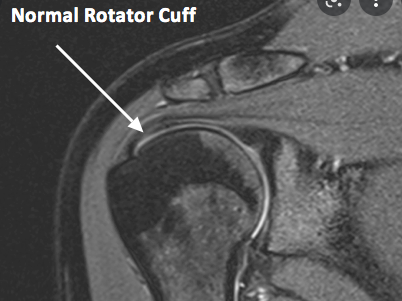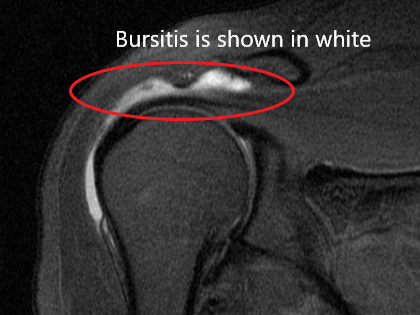Shoulder Bursitis
What is shoulder bursitis?
A bursa is an empty sac. It is like a pillowcase with no pillow in it or like a ravioli with no filling. There are around 150 of them all throughout the human body.
In the shoulder, one side of the bursa is connected to the rotator cuff and one side is connected to the muscle over it (see picture). The bursa has just a few drops of the body’s natural lubricant in it. The bursa allows the shoulder to move smoothly under the muscle.
With shoulder bursitis, the bursa becomes inflamed. The body then puts more fluid in the bursa than is normal (see picture).
What causes shoulder bursitis?
The most common cause of shoulder bursitis is shoulder capsulitis. The tight shoulder capsule pushes the ball up against the bony arch on top of the shoulder, which pinches the rotator cuff and the bursa.
What are the symptoms of shoulder bursitis?
The symptoms of shoulder bursitis are very similar to shoulder capsulitis. These include pain in shoulder with use, with motion, and while sleeping. This can be both end-range-of-motion pain (The Crank Test) and mid-range-of-motion pain.
How to tell if you have shoulder bursitis?
A physical exam and X-rays are needed. An MRI is useful (see picture). Seeing bursitis on an MRI is very common. However, it is uncommon for bursitis to be the main cause of a person’s shoulder pain.
How is shoulder bursitis treated?
The treatment for shoulder bursitis is also very similar to capsulitis: most people get better with a special form of therapy rather than surgery. Surgery is rarely needed.
The therapy involves stretching the shoulder to correct the mechanics of the joint. This limits the pressure on the bursa and brings down the inflammation. Usually the therapy program is the 4 quadrant stretching program. Also bursitis does best when the person continues to use their shoulder. It usually does not get better if the person “babies” their shoulder.


B = bursitis. T = rotator cuff tendon. Normal bursa is shown on the left. Bursitis is shown on the right.

